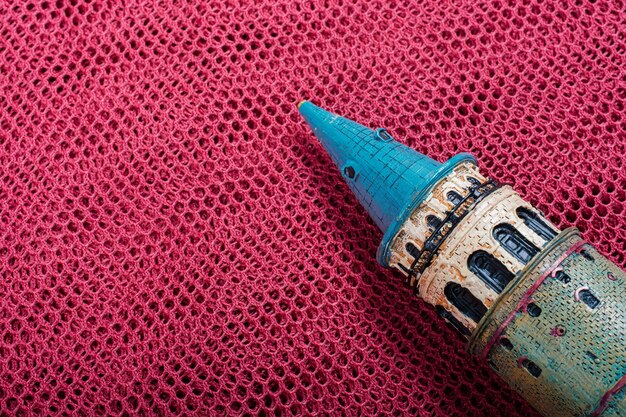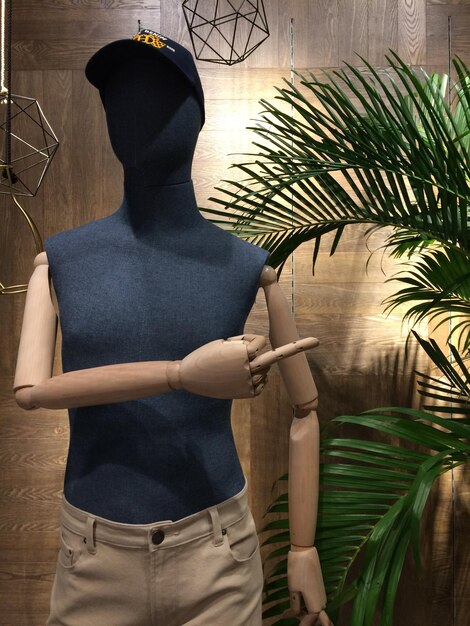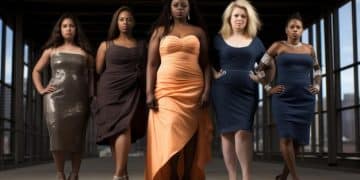Designer Spotlight: Innovative Textiles in American Menswear

Discover how an American designer is revolutionizing menswear by integrating innovative textiles, blending traditional tailoring with cutting-edge fabric technology for a unique and sustainable approach to fashion.
Step into the world of cutting-edge fashion where an American designer is making waves by redefining menswear through the innovative use of textiles. This designer spotlight: the American designer redefining menswear with innovative textiles explores how tradition meets technology, creating a fresh, sustainable approach to men’s fashion.
American Menswear: A New Textile Frontier
American menswear is experiencing a dynamic shift, driven by innovation in textiles. Designers are moving beyond conventional fabrics, exploring new materials and techniques to redefine what men wear. This movement emphasizes sustainability, performance, and unique aesthetics.
The Rise of Sustainable Fabrics
Sustainable fabrics are becoming increasingly important in menswear. Designers are seeking materials that minimize environmental impact while maintaining style and functionality. This includes using recycled fibers, organic cotton, and innovative plant-based materials.
Performance Textiles in Everyday Wear
Performance textiles, traditionally used in athletic wear, are now finding their way into everyday menswear. These fabrics offer benefits like moisture-wicking, breathability, and durability, enhancing comfort and practicality.
- Explore materials like Tencel and Modal for eco-friendly options.
- Consider fabrics with antimicrobial properties for added hygiene.
- Look for textiles that offer UV protection for outdoor wear.
- Incorporate recycled polyester to reduce plastic waste.
The integration of these elements not only enhances the functionality and appeal of menswear but also aligns with a growing consumer demand for ethical and environmentally conscious fashion.
The American Designer: A Profile in Innovation
At the forefront of this textile revolution is an American designer known for their groundbreaking approach to menswear. This designer combines classic tailoring techniques with avant-garde textile applications, crafting garments that are both timeless and modern.

Designing with Intent
The designer’s philosophy centers on designing with intent, prioritizing sustainability and functionality. Each garment is carefully considered, from the initial concept to the final stitch, ensuring minimal waste and maximum impact.
Collaborations and Partnerships
The designer often collaborates with textile mills and technology companies to develop custom fabrics that meet their exacting standards. These partnerships foster innovation and push the boundaries of what’s possible in menswear.
Through these collaborations, the designer is able to explore and implement techniques that not only improve the aesthetic and tactile qualities of the garments but also address key environmental concerns, leading the way for a more responsible and forward-thinking fashion industry.
Textile Innovations: What’s New in Menswear?
Textile innovation is driving new possibilities in menswear, with designers experimenting with a wide range of materials and techniques. These advancements are leading to garments that are more comfortable, durable, and visually striking.
3D-Printed Fabrics
3D-printed fabrics are emerging as a game-changer in menswear. This technology allows for intricate designs and customized fits, opening up new avenues for creativity and personalization.
Smart Textiles and Wearable Technology
Smart textiles integrated with wearable technology are adding new dimensions to menswear. These fabrics can monitor vital signs, regulate temperature, and even change color, offering unparalleled functionality and style.
- Consider integrating conductive yarns into fabrics for smart features.
- Explore the use of phase-change materials for temperature regulation.
- Incorporate sensors to track movement and activity levels.
By embracing these advances, menswear is set to transform into a more responsive, adaptive, and interactive form of apparel, offering wearers a personalized and technologically enhanced experience.
Sustainability as a Core Design Principle
Sustainability is no longer a trend but a core design principle for forward-thinking menswear designers. This involves using eco-friendly materials, reducing waste, and promoting ethical manufacturing practices.

The Importance of Transparency
Transparency in the supply chain is crucial for ensuring sustainability. Designers are increasingly providing detailed information about where their materials come from and how their garments are made.
Circular Fashion Models
Circular fashion models, such as clothing rental and resale programs, are gaining traction in menswear. These initiatives extend the life cycle of garments and reduce the need for new production.
By embracing circularity, designers are not just creating clothes; they are contributing to a system that values resources, reduces waste, and promotes a more sustainable future for the fashion industry and beyond.
The Impact on Consumer Preferences
Consumer preferences are evolving, with more men seeking out garments that align with their values. This includes a growing demand for sustainable, ethically made, and innovative menswear options.
The Rise of Conscious Consumption
Conscious consumption is on the rise, with men actively seeking out brands that prioritize sustainability and social responsibility. This trend is driving demand for transparency and ethical practices.
The Appeal of Unique Designs
Unique designs and innovative textiles are also appealing to consumers who want to stand out from the crowd. Menswear is becoming more expressive, with men embracing bold colors, patterns, and textures.
Consequently, brands that cater to these emerging needs and preferences are well-positioned to thrive in the evolving landscape of the menswear market, appealing to a new generation of fashion-conscious and socially aware consumers.
The Future of Menswear: A Textile-Driven Transformation
The future of menswear is inextricably linked to textile innovation. As technology advances and consumer preferences shift, designers will continue to push the boundaries of what’s possible, creating garments that are more sustainable, functional, and stylish.
The Role of Technology
Technology will play an increasingly important role in menswear, from 3D-printed fabrics to smart textiles and wearable technology. These advancements will enable designers to create garments that are truly cutting-edge.
Collaboration and Open Innovation
Collaboration and open innovation will be key to driving progress in menswear. By working together, designers, textile mills, and technology companies can unlock new possibilities and create a more sustainable and innovative fashion industry.
By working collaboratively and embracing open innovation, the menswear sector can unlock a new era of design, production, and consumption that is both stylish and ecologically responsible.
| Key Aspect | Brief Description |
|---|---|
| ♻️ Sustainable Fabrics | Use of recycled, organic, and plant-based materials. |
| 🚀 Textile Innovation | Integration of 3D-printed and smart fabrics. |
| 🌱 Eco-Friendly Practices | Emphasis on waste reduction and ethical production. |
| 👨💼 Consumer Demand | Growing need for ethical, innovative menswear options. |
FAQ
Innovative textiles include 3D-printed fabrics, smart textiles with wearable technology, and sustainable materials like recycled polyester and organic cotton. These fabrics enhance functionality and aesthetics in menswear.
Sustainability is integrated through the use of eco-friendly materials, ethical manufacturing practices, and circular fashion models. Transparency in the supply chain is crucial in ensuring sustainable production.
Performance textiles offer benefits like moisture-wicking, breathability, and durability, enhancing comfort and practicality. They are now commonly used in everyday menswear for added functionality.
Consumer preferences are shifting towards sustainable, ethically made, and innovative options. There is a growing demand for transparency and unique designs. Men are becoming more expressive in their fashion choices.
Technology will be increasingly important, from 3D-printed fabrics to smart textiles and wearable technology. These advancements will enable designers to create more sustainable, functional, and cutting-edge garments.
Conclusion
The American designer highlighted in this spotlight is revolutionizing menswear by integrating innovative textiles, thereby setting new standards for sustainability, functionality, and style. As consumer preferences continue to evolve, the future of menswear will undoubtedly be shaped by textile-driven transformations, promising a more responsible and fashion-forward industry.





